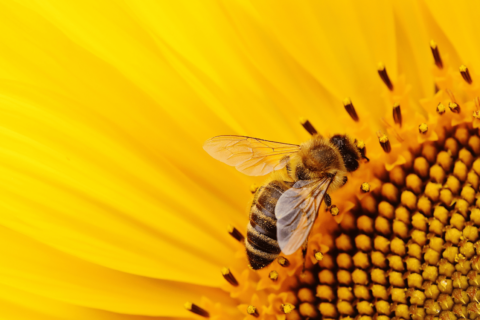Ah, ants! Those tiny, industrious creatures can turn a peaceful home into an annoying battleground. Here in Missouri, we’re no strangers to these little pests. From Pharaoh to Carpenter, our state has its fair share of varieties. Though many people consider them a springtime or summertime pest, they can be an issue at any time of the year. At Vogelsang Pest Management, we’re here to help you identify and deal with these tiny invaders effectively and safely.
Pharaoh
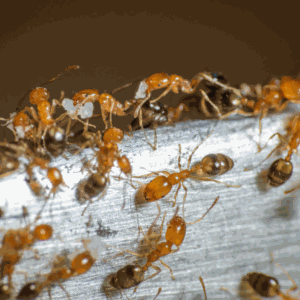
Pharaoh ants are tiny and yellowish and can be a real nuisance. They love to invade homes, seeking out food and water sources. These ants are particularly tricky because they can split their colonies and scatter if disturbed, making them difficult to control. If you see one, there are probably hundreds more hiding nearby.
Odorous House
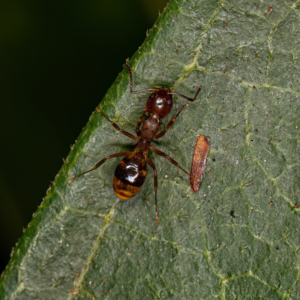
Have you ever noticed a peculiar, rotten coconut smell after squashing an ant? You’ve likely encountered the odorous house ant. These small, dark brown pests are common in Missouri and tend to invade homes for sweets and grease. They typically move their nests about every three months in response to rain.
Pavement
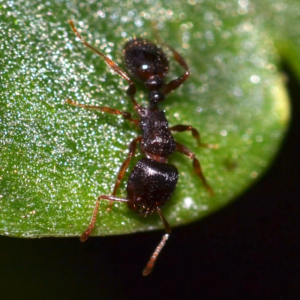
Pavement ants are named for their habit of nesting in cracks in pavement and under stones. They are dark brown to black and often seen foraging in large numbers. They eat almost anything, including insects, seeds, honeydew, bread, meats, nuts, and cheese. Although they do not pose a public health risk, they can contaminate food, so it’s best to keep them away.
Invasive Ant Types
An ant is called invasive when it moves to a place where it doesn’t usually live and causes problems. They can take over by using up food and space that local animals need, making it hard for other species to survive. They might also harm plants, buildings, or people by biting or stinging. Invasive ants spread quickly and can be very hard to control, causing environmental damage and costing money to fix the problems they create.
Small Honey
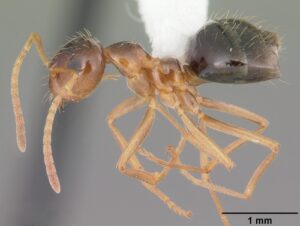
These tiny, yellow to dark brown ants are often found trailing along kitchen counters and pantries. Their primary food source is sweets. They are most active at night, so you might not even realize you have an infestation until it’s too late.
Acrobat
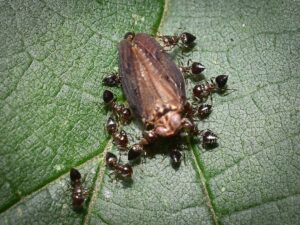
Known for their heart-shaped abdomen, acrobat ants can be quite the acrobats when disturbed, raising their abdomen above their thorax and head. They are usually light brown to black, sometimes multicolored, and prefer nesting in moist wood. They’re not just acrobatic; they can also bite when threatened.
Field
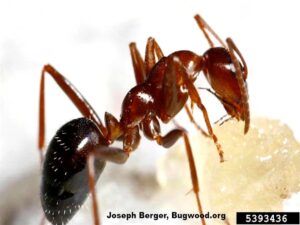
Field ants tend to be larger ants. They are usually found outdoors but can venture inside when swarming or searching for food. They build large mounds in lawns, which can be unsightly and problematic.
Carpenter
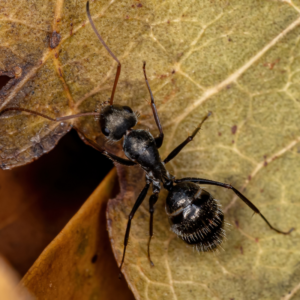
Perhaps the most destructive of the bunch are carpenter ants. These large, black (or red) ants don’t just invade your home; they can cause significant damage by tunneling through wood to build their nests. If you see signs of a carpenter ant infestation, it’s crucial to act fast to prevent structural damage to your property.
Dealing with an ant invasion?
While DIY solutions might offer temporary relief, these ant species can be incredibly resilient and challenging to eradicate. At Vogelsang Pest Management, we offer effective and safe solutions tailored to each specific ant problem to eliminate them and keep them from returning. Fall into comfort and peace of mind—contact us today to schedule an inspection and let us handle the pests so you can enjoy a peaceful, ant-free home!









